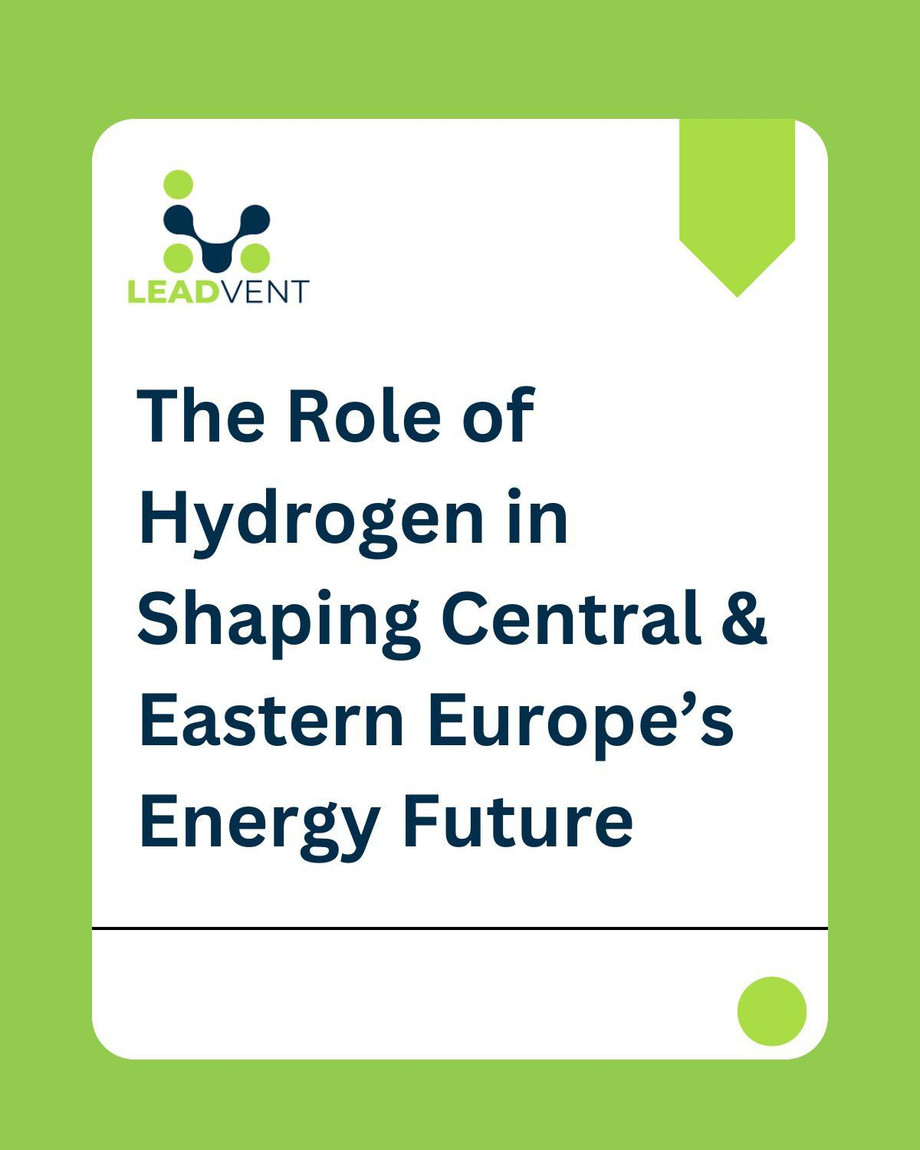Across Central and Eastern Europe (CEE), hydrogen is powering a new era of energy innovation, offering solutions for some of the region's most pressing challenges. With energy dependency, carbon emissions, and industrial demand under the spotlight, hydrogen is emerging as a critical component of the clean energy transition.
This blog explores hydrogen’s growing importance in decarbonizing industries, its role in reducing energy dependencies, and the policy advancements shaping its adoption. With expert insights and real-life examples, we’ll uncover why hydrogen technologies could define the energy future of CEE.
Why Hydrogen Matters in Central and Eastern Europe
Addressing Energy Dependency
CEE relies heavily on imported energy, particularly natural gas and oil, creating economic and political risks. Hydrogen provides a path to energy independence through domestic production via renewable-powered electrolysis.
Poland, for example, is advancing initiatives like the Lower Silesian Hydrogen Valley to boost local hydrogen production, enhance energy resilience, and reduce reliance on imported fossil fuels.
Accelerating Decarbonization Goals
To meet EU climate targets, including net-zero emissions by 2050, CEE countries must cut reliance on high-carbon industries. Hydrogen offers a versatile solution to decarbonize multiple sectors:
-
Energy: Hydrogen stores renewable energy during surpluses, stabilizing grids and ensuring reliable power.
-
Transport: Hydrogen-powered fuel cell vehicles are gaining traction in logistics and public transit.
-
Industry: Energy-intensive sectors like steel manufacturing can replace coal with hydrogen, significantly reducing emissions.
Aligning with EU Priorities
The EU has made hydrogen central to its sustainable energy strategy, with a goal of 40 GW of electrolyzer capacity by 2030. CEE countries are increasingly aligning with initiatives like the EU Hydrogen Strategy.
Hydrogen’s Potential Across Key Industries in the CEE Region
Hydrogen has the potential to transform multiple industries, including energy, transportation, and manufacturing.
Energy Sector
Hydrogen supports large-scale energy storage, bridging the gap between renewable power generation and reliable distribution.
-
Example: Lithuania’s Port of Klaipeda is integrating green hydrogen with offshore wind projects to boost renewable energy use and improve energy security.
Transportation Sector
Hydrogen-powered buses and trucks, especially fuel cell electric models, are gaining momentum in CEE. For instance, Hungary is adopting hydrogen buses to cut emissions and improve urban air quality.
Manufacturing Sector
Industries like steel and cement, responsible for 14% of global CO2 emissions, can use hydrogen instead of coal. Germany’s hydrogen corridor initiative offers a model CEE nations can replicate to decarbonize heavy industries.
Policy and Investments Driving Hydrogen’s Growth in CEE
Governments across the CEE region are prioritizing hydrogen through supportive policies and funding programs:
-
Poland has introduced its Hydrogen Strategy to support hydrogen production and build the necessary infrastructure.
-
Czech Republic is incorporating hydrogen into its long-term National Energy and Climate Plan (NECP), emphasizing its industrial utilization.
-
Slovakia is driving hydrogen adoption through the Slovak National Hydrogen Association, which promotes sustainable development.
Meanwhile, international collaborations like the Three Seas Initiative are fostering cross-border cooperation on hydrogen infrastructure projects.
Funding the Hydrogen Economy
Access to funding remains key to unlocking hydrogen’s potential. The EU’s Innovation Fund and Horizon Europe are providing grants and resources for hydrogen technology development. At the CEE Hydrogen Summit, attendees will explore how to secure such funding and leverage public-private partnerships.
Statistics that Prove Hydrogen’s Role in CEE’s Energy Future
-
Hydrogen production could meet 24% of global energy demand by 2050, replacing coal, oil, and gas in several sectors. (Source: Hydrogen Council)
-
CEE countries could cut emissions by up to 40 million tons annually through hydrogen adoption. (Source: European Commission)
-
The EU plans to invest €470 billion in hydrogen by 2050, with a significant portion allocated to its member states, including CEE nations.
Frequently Asked Questions About Hydrogen in CEE
1. Is hydrogen currently produced in CEE countries?
Yes, many CEE countries are producing hydrogen, primarily through natural gas reforming. However, the focus is shifting toward green hydrogen through renewable energy-powered electrolysis.
2. What are the challenges to adopting hydrogen in CEE?
Key challenges include high production costs, insufficient infrastructure for storage and transportation, and the need for clearer policy frameworks.
3. What advantages can businesses in CEE gain from adopting hydrogen?
Hydrogen can help businesses reduce operational carbon footprints, comply with EU sustainability mandates, and tap into emerging markets for clean technologies.
The Road Ahead for Hydrogen in CEE
Be at the forefront of the hydrogen revolution by attending the 8th Edition CEE Hydrogen Summit, a prestigious hydrogen event organized by Leadvent Group. Seize the opportunity to drive the future of hydrogen innovation. This exclusive gathering brings together industry experts, policymakers, and business leaders to explore the latest advancements and breakthroughs in hydrogen solutions across the CEE region. Gain invaluable insights from keynote speeches, engage in thought-provoking panel discussions, participate in interactive workshops, and forge strategic connections through networking opportunities. Don't miss this opportunity to be part of shaping the future of hydrogen innovation. Discover the transformative power of hydrogen energy at the CEE Hydrogen Summit. Join us to explore its vast potential and redefine the future of sustainable energy.

